Should you use a cat harness and lead?
Is it a good idea? If so, how do you do it properly?
Opinions differ on whether it’s right to put a cat on a lead and take it for a walk. For one cat owner this is the most normal thing in the world; for another, absolutely not. It’s normal with dogs. But with a cat? What are the pros and cons? What kind of a cat harness and lead? And how do you put them on properly?
Here are some helpful tips and, as a bonus, instructions for a DIY cat lead!
Cat lead – yes or no?
You want your kitty to be happy and able to do what comes naturally? To be free and unrestrained on her own turf, to feel the sun on her fur? Of course, that suits cats. In this case, a restricted outdoor walk on a cat lead is not a five star solution. But it is an improvement, provided that your cat is willing to walk with you on a lead. Because one thing is certain: your kitty is the leader, not the other way around!
Is a cat lead cruel?
Lurking, pouncing, catching prey, climbing and jumping….on a cat lead these are only possible to a limited extent, if at all. A cat’s urge to move is severely restricted when on a lead. It’s “look, don’t touch”! Imagine yourself as a cat: you experience the world much more intensely, feel it with every fibre of your body and all your senses. And then you are restrained on a lead! You’re trapped and can only react to all the stimuli around you as far as the bothersome lead allows. Would you like that?
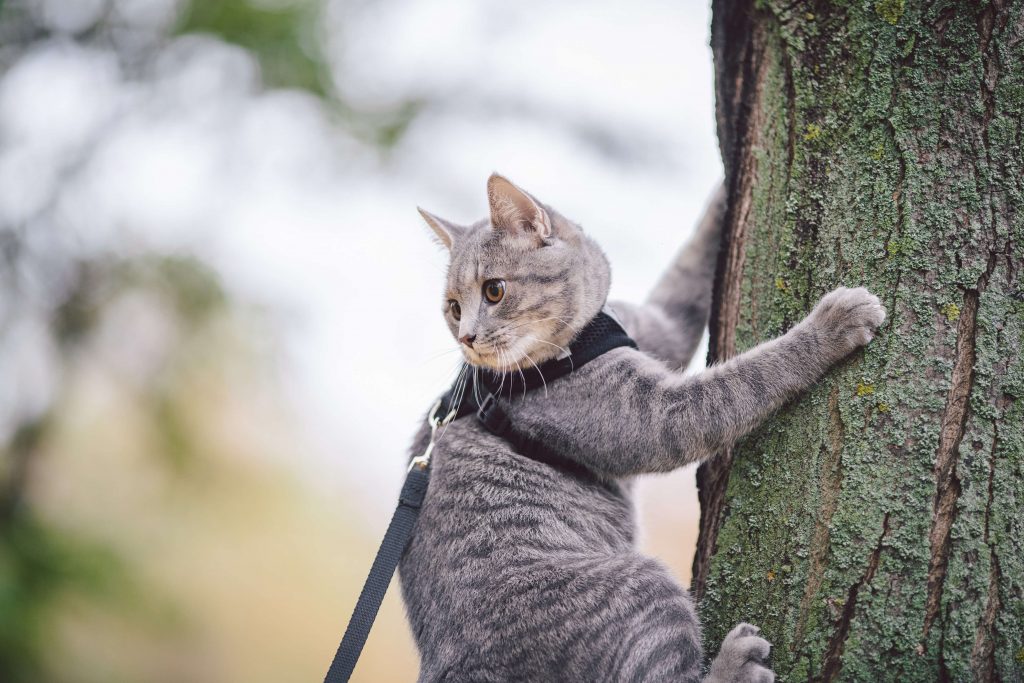
But there are exceptions! Some cats get along quite well with restricted walks on a cat lead. Whether or not this is an option for your cat depends very much on the personality of your cat.
When is a cat lead useful?
A cat lead can be useful if your cat is inexperienced when going outdoors or if you have moved house and the new territory is still unfamiliar to your cat. Then you can accompany your cat on a cat lead at first. But please don’t take a lifelong indoor cat, who only knows its own four walls, out into the big wide world on a lead! This is really stressful for a cat that has never been confronted with the outside world and can backfire.
Walking with a cat
There are some cats that love it when you take them for a walk. Some breeds, such as the Maine Coon, are particularly suited to walks. For confident kitties that have little fear of contact with strangers or animals, a walk in the countryside can be a welcome change. They love exercise and excursions in nature!
Shy and timid breeds prefer to stay where they feel safe: at home.
A walk in unfamiliar terrain filled with unexpected sensations would be pure torture for them.
Do you have to walk cats?
If your pet enjoys going for a walk with you and getting some fresh air, this has certain advantages. But you don’t have to have a guilty conscience if you don’t take your cat outside. A cat is not a dog! With a dog, you should go outside at least three times a day so it can do its business. A cat that is used to indoor life will not miss anything: it has the luxury of its own litter tray.

Walking a cat without a lead
Have you ever witnessed this before? A walker with a cat in tow, but completely free, ie without a lead? If a cat is used to being outdoors and has a close relationship with you, it may accompany you without a lead if it feels like it. She will decide how far she wants to go with you. At times, she may explore the surroundings and trail behind for a short time before catching up with you again. Or she will go home before you if she doesn’t feel like walking anymore.
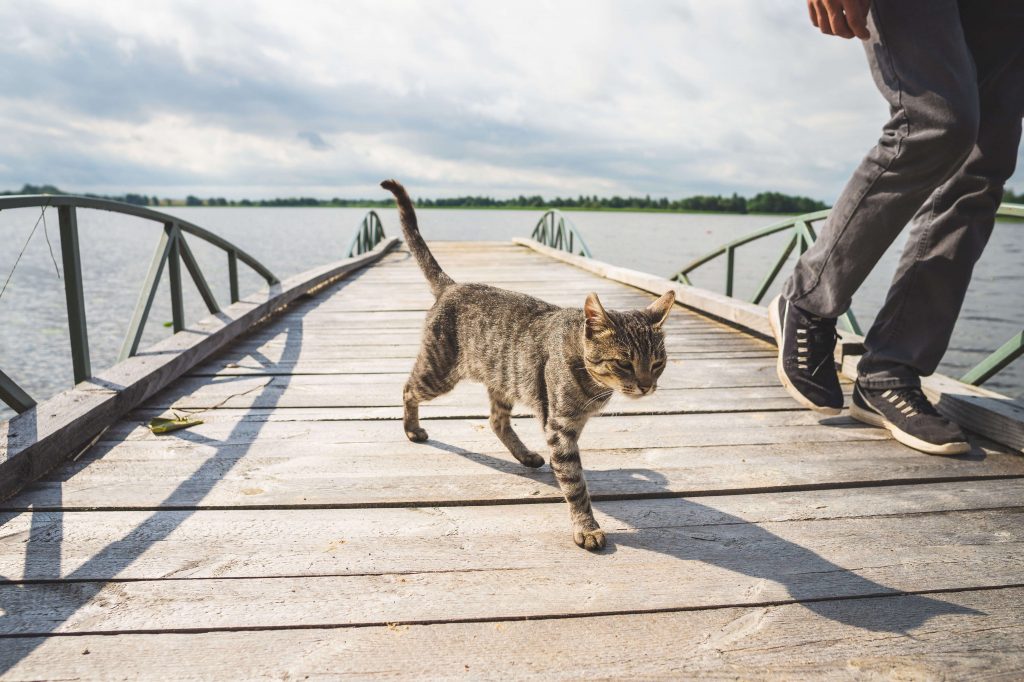
Walking with a cat lead
Just leash the cat and go outside? No! That will definitely not go well! First you need the right equipment. Then you should carefully introduce your cat to the lead and harness. Dry runs at home are the next step! Only when your kitty walks calmly with you on the lead on flat ground can you dare to go for a walk outside. This is best done in a place with few people and no disturbances. And don’t overdo it at first! To get your cat used to it, it’s best to go for a short walk.
Keeping a cat on a lead in the garden
The perfect place for that very first cat-lead walk is in the garden at home. Your kitty already knows it from the window. She is familiar with the terrain, even if she hasn’t yet ventured there independently. The advantages: you can lead your cat into her new freedom step by step. Open the patio door and off you both go into the garden on a lead! Let your cat decide when and how she takes the first step to explore her new territory. Don’t rush it!
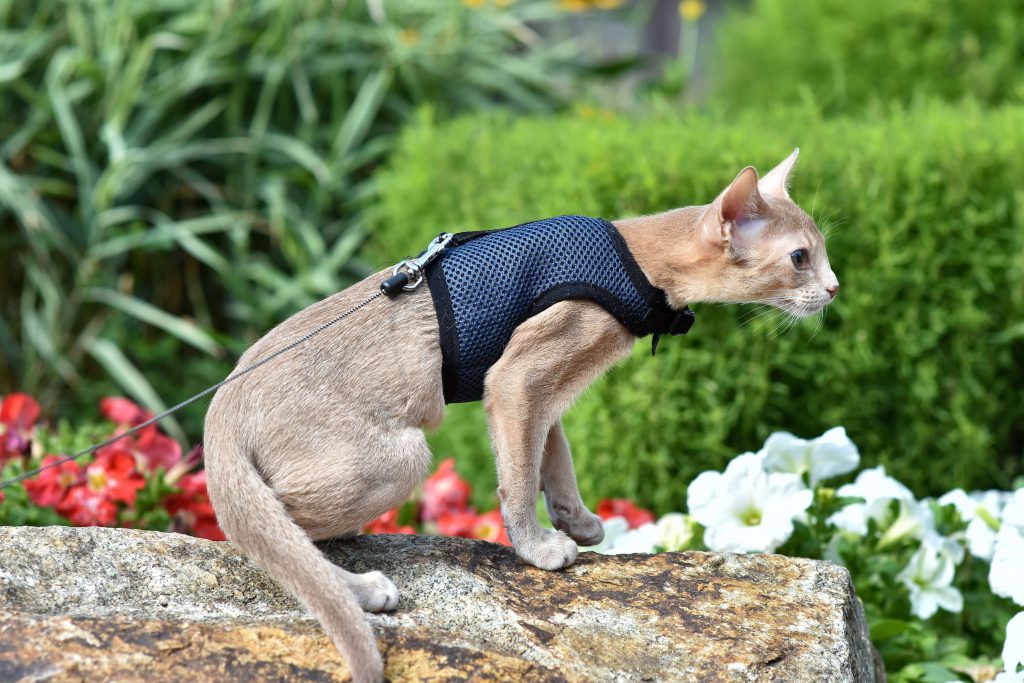
Choosing the right cat harness and lead
Cat harnesses and cat leads should fit your cat snugly, but not constrict it. They should allow your cat to move as freely as possible! A cat harness with a back and chest strap and a cat lead are ideal. Please do not put a collar on your cat, because it is not safe. Either she will try to slip out of the collar, or there is a risk that she will strangle herself with the collar if she panics and gets caught somewhere.
TPP: A cat will only feel comfortable on a walk if it likes the cat harness.
Characteristics of a good cat harness:
- Soft material that feels good and moulds nicely to the body
- No sharp-edged fasteners or annoying eyelets
- No superfluous frills (glitter, decorative elements etc.)
- Comfortable handling (quick and easy to put on)
There are special cat harnesses that are also suitable for small dogs. But please pay attention to the sizing: cats are often a little slimmer than small dogs!
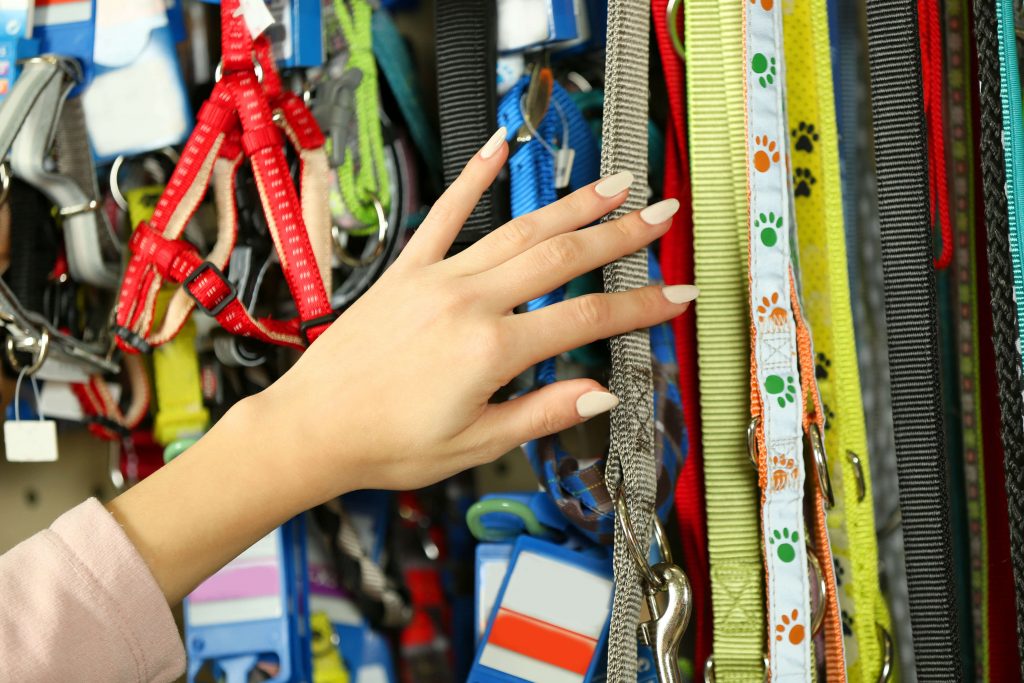
There are many variations. Remember: it’s not that important to be fashionable! The harness must be practical and fit your cat well. What would you wear for a hike? Chic high heels or sturdy hiking boots? You can do without glamour.
Which cat harness size is right?
Cat harnesses come in different sizes, from S to XL! Not all cats have the same build. Before you decide on a cat harness, measure your cat’s neck and chest circumference so that the cat harness size fits perfectly to your cat’s body. Please bear in mind that a finger width, i.e. about 2 cm, should fit under the harness; otherwise your kitty will feel too constricted in her harness.
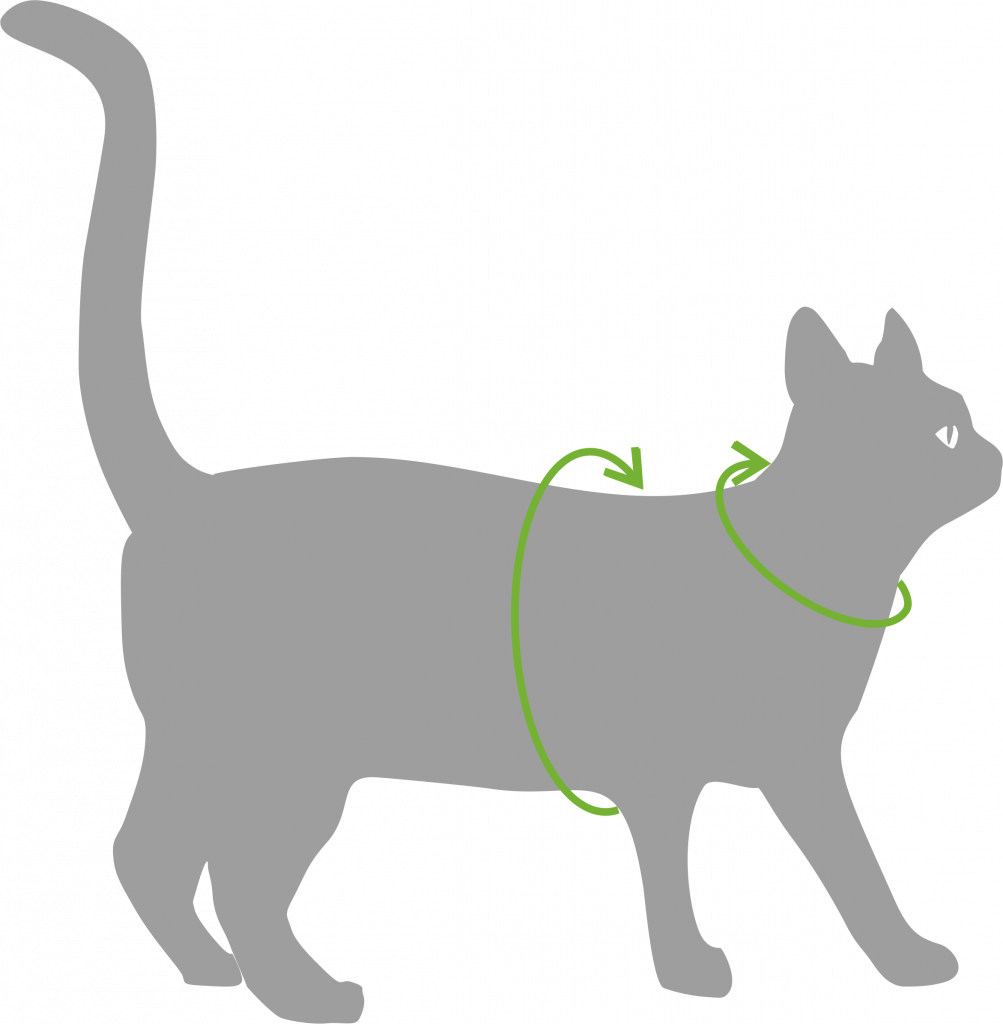
Is a cat harness escape-proof?
Cats can wriggle like eels out of almost anything if it doesn’t suit them! When buying a harness, make sure that you choose an escape-proof harness that your cat can’t easily slip off. It should still be comfortable. Your cat should not feel like she is wearing a straitjacket. The fitting should take place at home. You can adjust everything at your leisure, provided your diva is in the mood…
Put on a cat lead and harness
Don’t just think: I’ll just pop on the cat harness and lead and head off into the woods. Unfortunately, that won’t work with a cat! Don’t surprise her – give her enough time to get used to the cat harness and lead. These are completely new and unfamiliar things for your cat. At first she will be suspicious: “what are these strange things?” And then you come close to her and get right up in her face? Think of it from the cat’s point of view, and go gently!
The right way to put a cat on a lead
If you want to put a lead on your cat, you should give it time to familiarise itself with the cat harness and lead in advance:
- SEE Place the cat harness and lead on the floor.
- SMELL Let your cat sniff and paw at it.
- PUT ON First put the cat harness quickly over the muzzle, then over the head and chest.
- LEASH UP only when your cat is used to the cat harness, then hook in the cat lead.
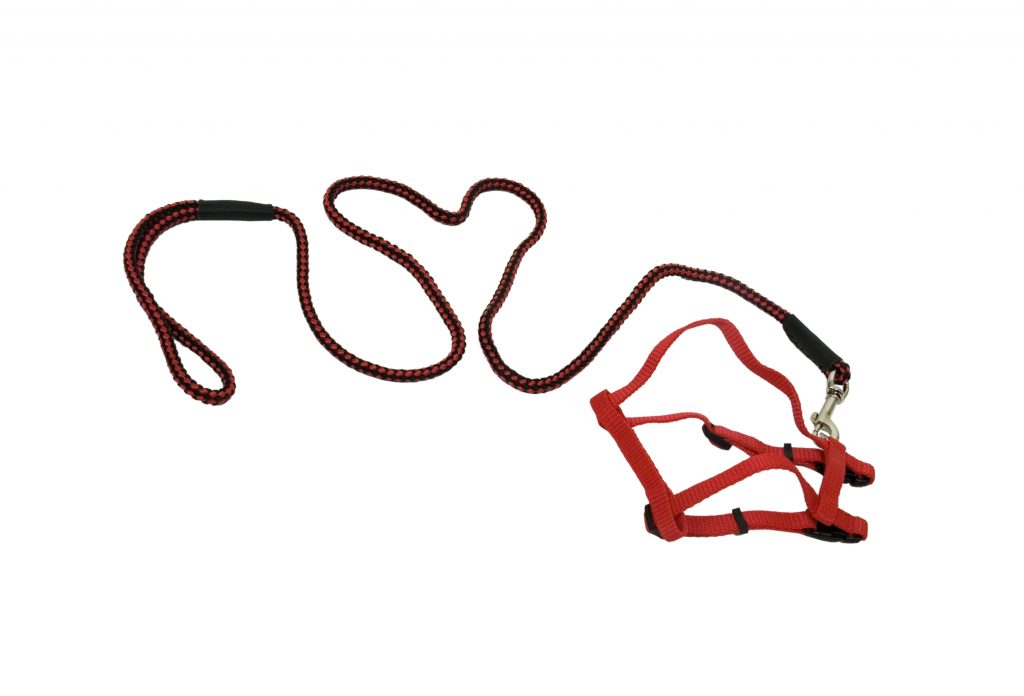
TIP: Be patient! A confident cat will adapt to being leashed more quickly than a shy cat.
Helpful tips for getting your cat used to a lead
You can get your cat used to the cat lead if you positively reinforce every step. Reward each moment of successful learning and your cat will register these as pleasant memories. We also have tips and tricks here on how to introduce your cat to new things in a playful way.
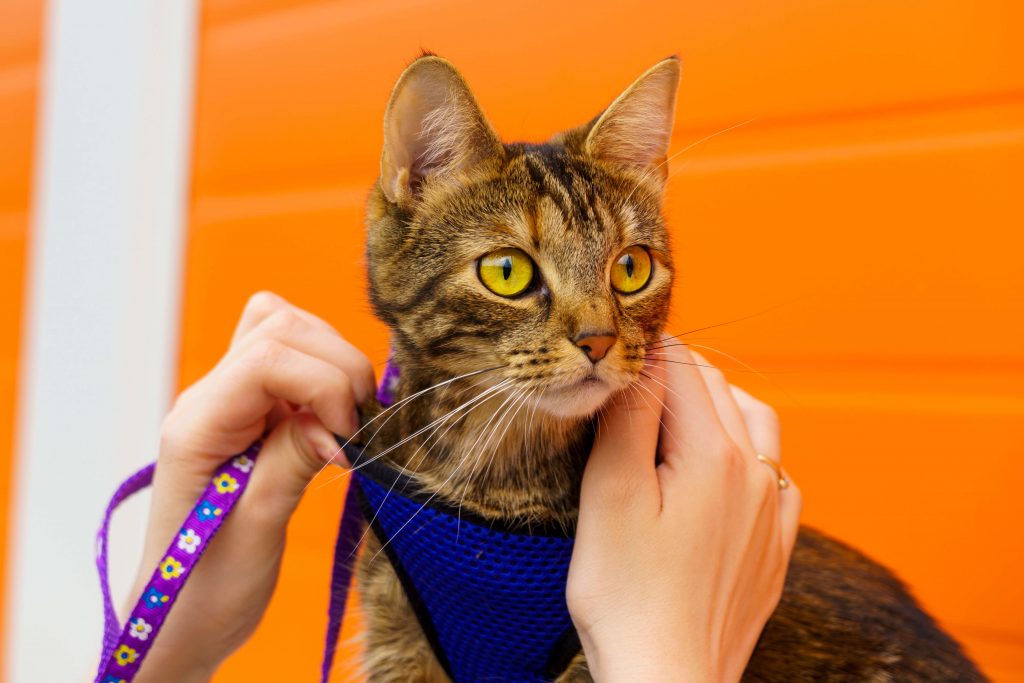
Only when your furry friend has become accustomed to being walked on a cat lead indoors, is it time for the first trip outside! Take your cat in a transport box to a quiet place in the countryside and let her scan the new environment from the box before you let her out.
How to make your own cat lead
You want to make your own cat lead?
For a 2 metre long cat lead (including hand loop) you will need:
- two 8 metre long elastic nylon cords
- Metal carabiner for straps up to 25 mm wide
- tweezers
- lighter
- Knot the 2 strands of nylon cord to the carabiner ring, making 4 strands.
- Plait the 4 individual strands together.

3. When the cords are intertwined, pull the ends of the hand loop back through the lead with the tweezers.
4. Burn these ends with the lighter (with a small flame!) and pull them back until they tuck inside and are no longer visible – and you are ready to go!


